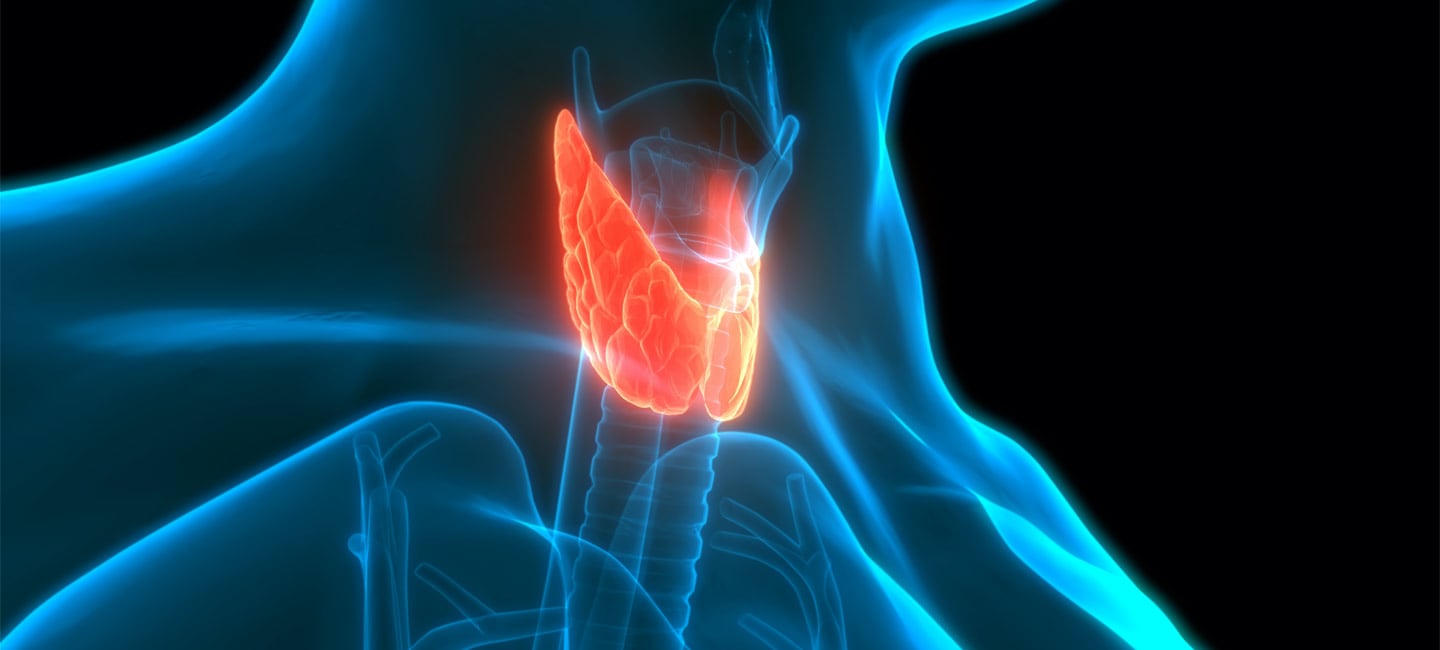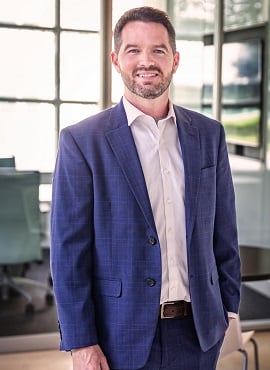What You Need to Know About Thyroid Cancer
According to the American Cancer Society, approximately 44,000 Americans will be diagnosed with thyroid cancer this year. Thyroid cancer is commonly diagnosed at a younger age than most other adult cancers, and women are three times more likely to develop the disease than men.
For Thyroid Cancer Awareness Month, we asked Dr. Bryan McIver, deputy physician in chief at Moffitt Cancer Center and senior member in the Endocrine Oncology Program, and Dr. Kedar Kirtane, assistant member in Moffitt’s Head and Neck Oncology Program, some of the most pressing questions about thyroid cancer. Here’s what they had to say:
Q: What is the thyroid?
McIver: The thyroid gland is a small fleshy organ that sits in the root of the neck. It’s about the size of your two thumbs, one on each side of the windpipe or the trachea. There’s a little bridge across the middle called the isthmus that joins those two lobes of the thyroid gland together. It’s the source of thyroid hormone which is an important regulator of all the different systems in the body. It acts a bit like the conductor of an orchestra in the way it sets the pace and sets the tone affecting the function of every single cell in the body. If the thyroid levels are normal, that sets the stage for normal health.
Q: What are the symptoms of thyroid cancer?
Kirtane: Most of the symptoms with thyroid cancer are pretty nonspecific. Sometimes people experience a painless lump or swelling in the front of the neck, swollen glands or unexplained hoarseness. There may be difficulty speaking, a sore throat that doesn’t get better after a few weeks or swallowing may become more difficult. These are all very nonspecific, but potential symptoms of thyroid cancer.
Q: What causes thyroid cancer?:
McIver: Most cases of thyroid cancer are sporadic. They appear for no particular reason that we can identify. We do know that there are some risk factors for developing thyroid cancer or some cancers that run in the family. There’s a group of thyroid cancers called medullary thyroid cancer, a proportion of which are familial and passed down from one generation to the next. That’s quite uncommon, but it is something we need to be on the lookout for. More commonly thyroid cancers can be triggered by radiation exposure. Typically, that would be radiation used for treatment of somebody with another type of cancer. Young people, especially, exposed to radiation for any reason are at risk for developing thyroid cancer. In addition, certain occupational or environmental exposures may increase the risk for thyroid cancer, something that most likely affects firefighters and other first responders, who may be exposed to carcinogenic substances through their work.
Q: How is thyroid cancer diagnosed?
Kirtane: Many thyroid cancers are incidentally found. If someone has a neck mass or difficulty swallowing, then usually it’s worked up with an ultrasound or some form of imaging, and then you see an abnormal lesion. Putting someone through a procedure is not without its own side effects and consequences. We have to be really thoughtful when to work on something that’s seen as abnormal on a scan. The real way to truly diagnosis thyroid cancer is through a biopsy, but the decision to biopsy is a complicated one that’s usually done in a multidisciplinary fashion with medical oncologists, endocrinologists, thyroid surgeons, radiologists and pathologists.
Q: How common is it for thyroid nodules to become cancerous?
McIver: The vast majority of thyroid nodules turn out to be benign. Thyroid nodules are very common in women over the age of 50. There’s more than a 50% chance that if we look with the ultrasound, we will find nodules, but only about 5% of those nodules ultimately turn out to be cancerous when we evaluate them.
Q: Is there a higher incidence of thyroid cancer in any specific races or ethnicities?
Kirtane: Non-Hispanic whites or Caucasians tend to have the highest incidence, then the next highest is Asians. Blacks and African Americans have half the rate of thyroid cancer incidence as non-Hispanic whites. Non-Hispanic whites also have a higher incidence than Hispanic men or women.



